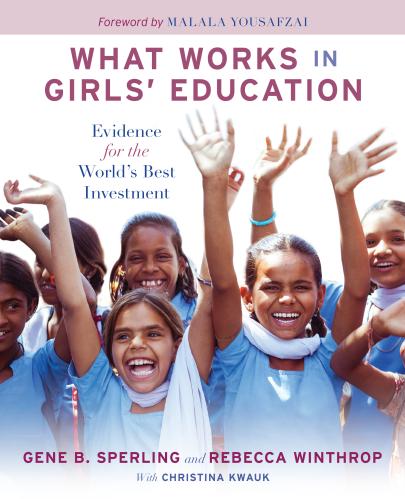Every girl deserves a high-quality education. And yet, in virtually every nation resources are scarce and those arguing for a greater investment in girls’ education must come to the table with not only a soft heart but also hard-headed evidence.
In our new book, What Works in Girls’ Education: Evidence for the World’s Best Investment, we detail the abundance of evidence that girls’ education has incredibly high returns, including not just increasing economic growth and wages, but also saving lives by making mothers and children healthier, lessening the effects of natural disasters and climate change, and ensuring better access to education for future generations.
But despite the enormous gains that could be achieved if we ensured every girl in the world completed a high-quality education, from early childhood up to the end of secondary school, millions of girls still are out of school around the globe, because they never had the chance to start, or because they were forced out of the system and unable to complete it. Millions of girls attend schools where the quality is so poor they aren’t learning even basic skills, and too many have to risk their lives and safety in order to go to school.
And yet, there is also an abundance of evidence on how to solve these problems. Policies and programs have shown in diverse geographical contexts how to get girls into school and help them complete their education, how to improve learning outcomes for both girls and boys, and how education can empower girls and promote female leadership. In our book we have compiled a comprehensive body of this evidence, drawing on hundreds of studies that show proven, effective ways of improving education for the world’s most marginalized girls.
These are just a few examples of the incredible amount of evidence on how to improve girls’ education. For more, you can buy our book to get a comprehensive analysis, or download it for free as a PDF.
No doubt many policymakers will ask how can we possibly afford to do this. But when one looks at both the moral imperative and the rigorous evidence of such high returns from secondary girls’ education, the right question is how can we afford not to do so?
The Brookings Institution is committed to quality, independence, and impact.
We are supported by a diverse array of funders. In line with our values and policies, each Brookings publication represents the sole views of its author(s).




Commentary
What works in girls’ education: Evidence for the world’s best investment
October 11, 2015